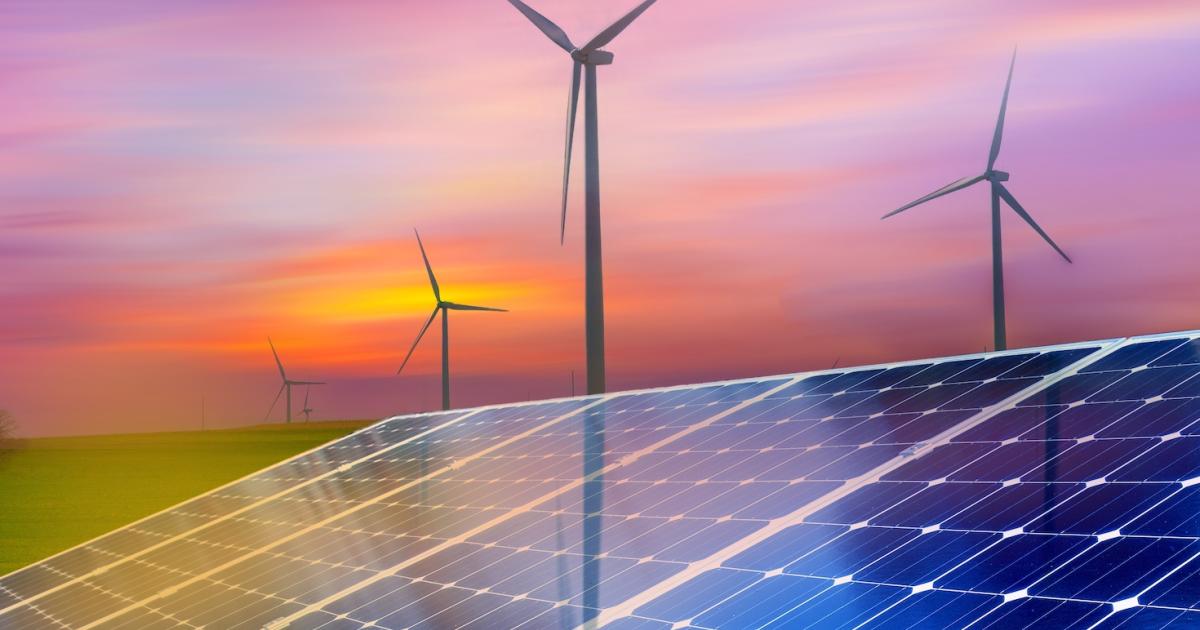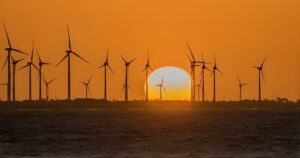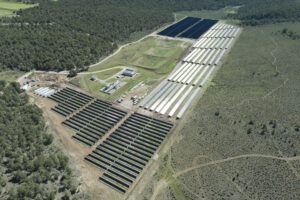
The Inflation Reduction Act (IRA) will allow the U.S. to take a major step towards its long term climate goals, but more action is needed to stimulate the trillions of dollars in investment needed to deliver a net zero emission economy by 2050.
That is the conclusion of the latest New Energy Outlook: US report from BloombergNEF (BNEF), which details how the U.S. government has allocated $369 billion of support to clean energy projects during the first year of the IRA, primarily through tax credits and direct subsidies for wind, solar, battery, electric vehicle (EV), carbon capture and hydrogen projects.
However, BNEF warned that clearer and stricter policies will be necessary to deliver net zero emissions by 2050, with modeling suggesting current incentives would result in a 40 percent drop in energy-related emissions by 2035 and a 55 percent cut by 2050 against a 2021 baseline. Such emissions reductions would represent a major transformation of the U.S. energy system, but would fall short of the climate targets set by the Biden White House.
"The IRA has dangled some very attractive carrots that will get the economy moving, but to make it move fast enough, the U.S. will need a few more sticks," said Tom Rowlands-Rees, head of North America Research for BNEF.
Derrick Flakoll, policy associate for North America at BloombergNEF, hailed the IRA as a "multibillion-dollar down payment on decarbonization," but he stressed that further policies would be needed to stimulate the levels of investment needed to reach net zero emissions.
The report details three pathways for the U.S. to hit net-zero emissions by 2050 and rapidly scale up investment over the next decade from the $141 billion invested in energy transition technologies in 2022 to nearly $10 trillion cumulatively by 2032.
The IRA's impact on bridging this financing gap depends on the extent to which the incentives delivered through the legislation can trigger additional private sector investment in clean tech projects.
BNEF's modeling suggests the cheapest way for the U.S. to reduce emissions in line with its goals would focus on the scaling up of investment in wind and solar power, along with low-carbon dispatchable electricity technologies.
Under such a net-zero scenario, the U.S. would need to invest $30 trillion across its energy system between 2022 and 2050 to ramp up both supply- and demand-side measures to accelerate the rollout of low-carbon technologies.
This investment surge would see wind and solar installations reach 3,292 gigawatts (GW) by 2050, up from 288 GW in 2022, while solar capacity alone would hit 2,065 GW from rooftop and large-scale projects by mid-century.
Moreover, the rapid electrification of end-use sectors of the economy would result in a doubling of annual power consumption resulting in 8,660 terawatt-hours (TWh) of demand in 2050, versus 3,946 TWh in 2021.
In all scenarios considered, about half of the investment required through to 2050 is driven by consumer-led purchases of EVs.
Further scenarios considered by BNEF detail how new tax credits for EVs and carbon capture technologies could lower energy-related emissions by 9 percent in 2050, with a carbon capture tech drive potentially capturing 211 million metric tons of CO2 emissions from gas-fired power generation a year and 12 million tons from industry in 2050.
Investment in power grids is also seen as a key enabler for the net zero transition, with BNEF estimating that $3.8 trillion could be needed between today and 2050 for system reinforcements, new connections and asset replacements to accommodate rising power demand. A corresponding investment in low-carbon power sources will be needed, to the tune of $5.6 trillion over the same time period, it said.
Under all BNEF's scenarios, remaining coal generation would shut down during the 2030s, while natural gas would continue to play a role in the power grid through 2050, albeit at reduced levels.
According to Tara Narayanan, BloombergNEF's senior associate for U.S. Power Markets, as cleaner power becomes key to decarbonization, the U.S. must address its "love affair with gas."
"Carbon capture could be a solution to emissions from natural gas, if the subsidies are extended rather than being phased out just when the technology starts to become competitive," she said.
- SEO Powered Content & PR Distribution. Get Amplified Today.
- PlatoData.Network Vertical Generative Ai. Empower Yourself. Access Here.
- PlatoAiStream. Web3 Intelligence. Knowledge Amplified. Access Here.
- PlatoESG. Automotive / EVs, Carbon, CleanTech, Energy, Environment, Solar, Waste Management. Access Here.
- BlockOffsets. Modernizing Environmental Offset Ownership. Access Here.
- Source: https://www.greenbiz.com/article/study-us-delivers-multibillion-dollar-down-payment-decarbonization
- :has
- :is
- $3
- $UP
- 12
- 2021
- 2022
- 2050
- 40
- 8
- 9
- a
- About
- accelerate
- accommodate
- across
- Act
- Action
- Additional
- address
- against
- All
- allocated
- allow
- alone
- along
- also
- america
- and
- annual
- ARE
- AS
- asset
- Associate
- At
- attractive
- Baseline
- battery
- BE
- become
- becomes
- being
- between
- biden
- Billion
- both
- bridging
- but
- by
- CAN
- Capacity
- capture
- Capturing
- carbon
- carbon capture
- cheapest
- clean energy
- clearer
- Climate
- co2
- co2 emissions
- Coal
- competitive
- conclusion
- Connections
- considered
- consumption
- continue
- Corresponding
- could
- Credits
- Current
- Cut
- decade
- decarbonization
- deliver
- delivered
- delivers
- Demand
- depends
- detail
- details
- direct
- dollars
- doubling
- down
- drive
- driven
- Drop
- during
- economy
- Electric
- electric vehicle
- electricity
- emission
- Emissions
- enabler
- energy
- energy projects
- enough
- Ether (ETH)
- EV
- extent
- Fall
- FAST
- few
- financing
- First
- Focus
- For
- from
- further
- gap
- GAS
- generation
- get
- Goals
- Government
- Grid
- Half
- he
- head
- Hit
- House
- How
- HTTPS
- hydrogen
- if
- Impact
- in
- Incentives
- industry
- inflation
- Invest
- invested
- investment
- IRA
- IT
- ITS
- jpg
- just
- Key
- large-scale
- Legislation
- levels
- Line
- Long
- love
- low-carbon
- lower
- major
- make
- Markets
- measures
- metric
- million
- modeling
- more
- move
- moving
- must
- Natural
- Natural Gas
- nearly
- necessary
- Need
- needed
- net
- net-zero
- New
- next
- North
- north america
- of
- on
- out
- Outlook
- over
- payment
- percent
- period
- Phased
- plato
- Plato Data Intelligence
- PlatoData
- Play
- policies
- policy
- potentially
- power
- Power grid
- primarily
- private
- private sector
- projects
- purchases
- Ramp
- rapid
- rapidly
- rather
- reach
- reduce
- Reduced
- reduction
- reductions
- remaining
- report
- represent
- required
- research
- result
- resulting
- rising
- Role
- rollout
- s
- Said
- same
- Scale
- scaling
- scenario
- scenarios
- sector
- Sectors
- see
- seen
- senior
- set
- she
- Short
- Shut down
- solar
- Solar Power
- solution
- some
- Sources
- starts
- Step
- stricter
- Study
- such
- Suggests
- support
- surge
- system
- Take
- targets
- tax
- tech
- Technologies
- Technology
- term
- than
- that
- The
- this
- three
- Through
- time
- to
- today
- tom
- tons
- towards
- Transformation
- transition
- trigger
- Trillion
- trillions
- u.s.
- U.S. government
- us
- vehicle
- Versus
- very
- Way..
- when
- which
- while
- white
- White House
- will
- wind
- with
- would
- year
- zephyrnet
- zero







